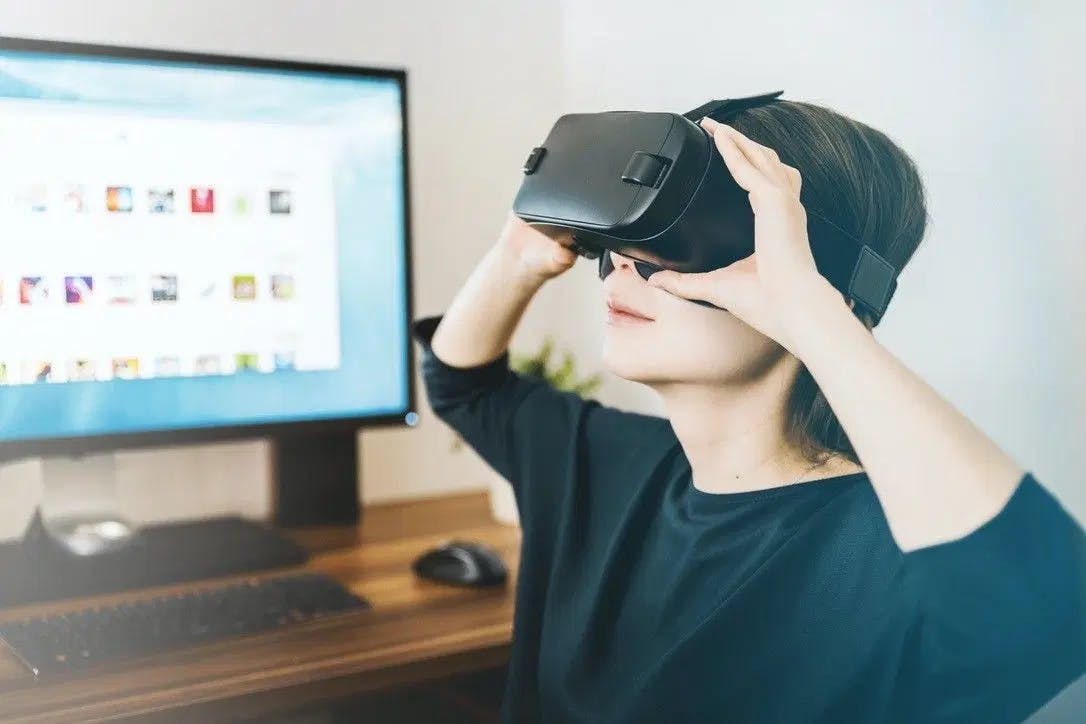
Virtual Reality Travel Is Ready for Takeoff
By Gwenever Pacifico • Jun 17, 2020
3 minutes
Any other year, we would’ve been packing up the sunblock, panama hat and flip flops without a second thought. This year though, as the weather heats up and we head into summer, a lot of us will be staying local.
But what if you could look out at sandy white beaches and hear the waves breaking while sitting on your couch? What if you could bathe in the sunshine all day without worrying about a sunburn?
Virtual travel could make this a reality.
Covid-19 Hits the Travel Industry Hard
With medical authorities advocating for social distancing and warning against nonessential travel to curb the spread of Covid-19, airlines have taken a huge hit. According to the Transportation Security Administration, the number of travelers at U.S. airports decreased by more than 93% in March.
In that same month, with a majority of the population under some form of lockdown and unable to go anywhere, travel advertising fell by 90%.
But travel isn’t dead.
Even after the Centers for Disease Control and Prevention issued and extended a No Sail Order for cruise liners due to the rapid spread of coronavirus on ships, cruises for August are already booked. Carnival Cruise Lines reported a 600% surge in bookings after their August relaunch was announced.
While the desire to go on vacation is there, the safety may not be.
VR Alternatives: Travel by Staying In
Virtual reality helps solve the safety dilemma. It lets you be in the middle of the action without having to actually be there.
When Covid-19 canceled Finland’s regular May Day celebrations, a virtual reality concert was held in Helsinki instead. More than 700,000 Finns along with 700,000 “virtual tourists” from around the globe attended the virtual concert. Some 150,000 viewers even created virtual avatars. Although they couldn’t physically be there, they could still share in the experience.
Japan is also embracing the stay-at-home-but-still-have-fun mantra. Arima Onsen, one of the oldest hot springs in Japan, is offering virtual reality videos so viewers can wear VR headsets and pretend they’re at the famous tourist attraction while sitting in their own bathtub. Hot Spring owner Kazushige Kanai says:
We’ve seen the number of visitors dwindling, but we can’t ask people to come under the current circumstances. So we decided to change our message, to ‘stay home and relax.’ We want people all over the world to enjoy Arima Onsen and ease their fatigue from the battle against the coronavirus.
Feeling uneasy about crowds but have always wanted to see a national park? No worries. You can take a solo virtual rafting trip through the Grand Canyon or a virtual hike to Phantom Ranch. Bummed about your canceled vacation to France? You can still immerse yourself in the Louvre’s exhibits by taking a virtual reality tour around the museum. You’ll be able to see Egyptian antiques, the Louvre’s moat and famous paintings while never having to leave the comfort of your living room.

Photo by JESHOOTS.COM on Unsplash
Benefits of VR Marketing: Try It Before You Buy It
Virtual reality is helpful not just for going on a trip when you can’t, but for planning a trip when you finally can.
Although VR marketing has been around for some time, the pandemic has changed it from a nice touch to a necessity.
With Covid-19 slowing travel, the World Travel and Tourism Council (WTTC) is asking governments around the globe to help protect the industry. One of the WTTC’s ideas to encourage tourism is increasing the promotional budgets for travel destinations. This is where VR marketing can shine.
3D excites the sense of sight more so than 2D and that spark of excitement can lead to more vacations being booked.
Savvy travelers usually scrutinize hotel descriptions and images, poring over customer reviews before booking a vacation. By using virtual reality apps, hotels and travel companies can provide these potential travelers a VR tour of the hotel — an experience that can offer more transparency than standard static photos.
Tourism businesses can also use virtual reality to let prospective customers sample attractions to draw them to a particular destination. For example, a resort in Barbados can provide a virtual taste of the nearby beaches, or a hotel in Tokyo can give a glimpse of a local cherry blossom festival.
John C. Graham, President of Travel World VR, says he foresees “VR videos becoming the ultimate tool for travel advisors and meeting and incentive planners. This is about creating a new kind of sizzle that will dramatically increase sales.”
Echoing this sentiment, Norm Rose, a Senior Technology Analyst at travel market research company Phocuswright, believes travel agencies should be preparing for life after Covid-19 by investing in virtual reality technology to help potential travelers plan for and get excited about real vacations.
Rose says, “If I were a major travel company, I would be cutting deals with equipment manufacturers to get headsets into consumers’ hands.”
And VR marketing isn’t just limited to hotels and destinations. It can also be used for airlines, showing prospective travelersa glimpse of their plane:
Even before booking a flight, passengers will get the chance to explore the actual aircraft they’d be boarding, see the layout, and choose a seat. ... In-flight VR could also offer virtual maps of the destination airport, helping travelers get their bearings before landing rather than having to run around looking for a connecting gate or onward transport.
VR marketing can entice the travel-shy to say “yes!” to adventure. It can give would-be travelers a taste of the king-sized bed they’ll be flopping into at a luxury hotel or a 360-degree view of Machu Picchu.
At a time when the farthest most of us travel is to our mailbox, VR can be the entertaining escape we need. One day, we will emerge from the pandemic into a world hungry once more for travel. Until then, airlines, hotels and other tourism industry organizations should be readying themselves with VR marketing.
At Codazen Labs, our designers and engineers are leveraging innovative VR technology. Learn more about how we work with immersive experiences for web, mobile, and virtual reality.